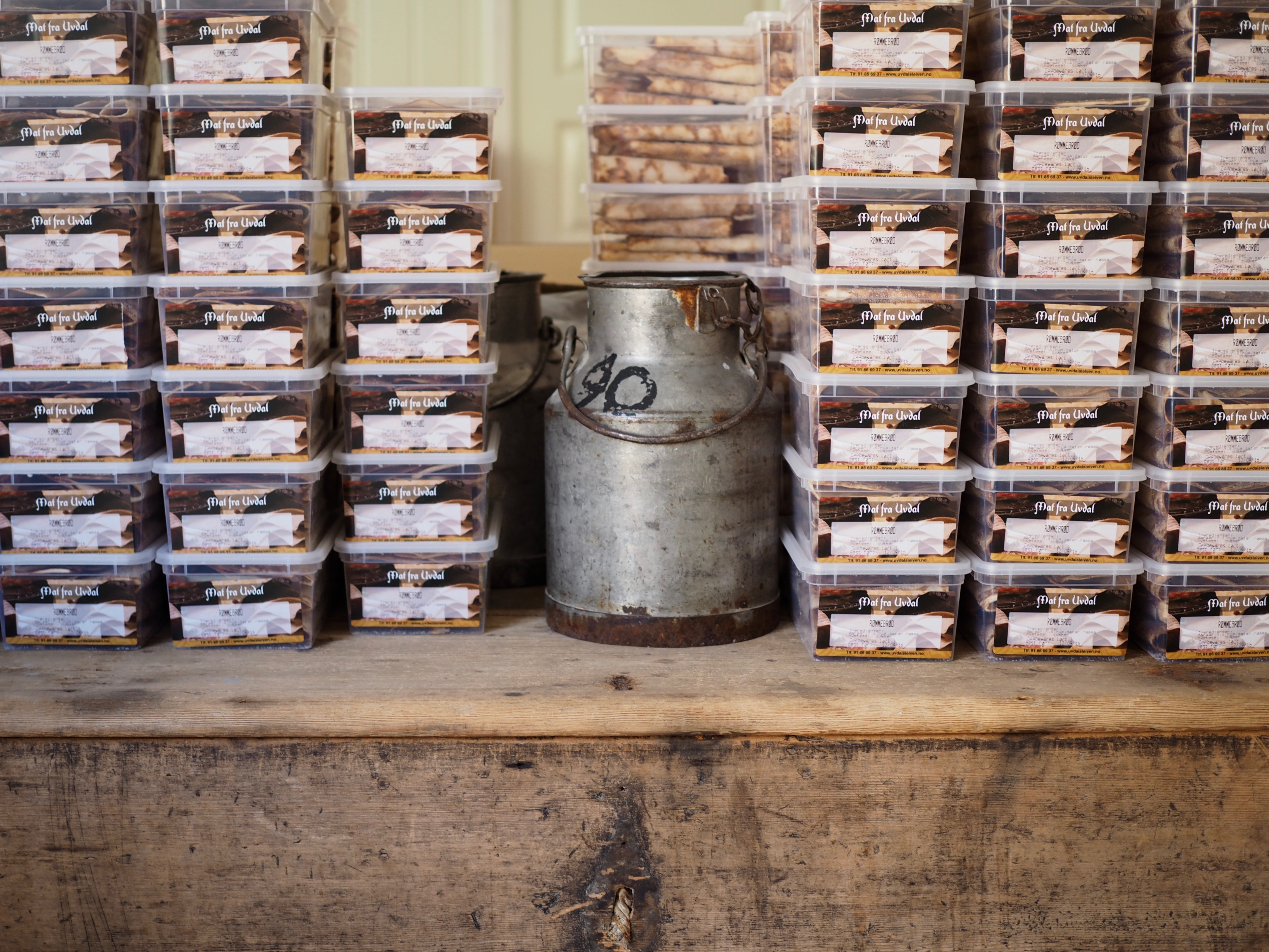
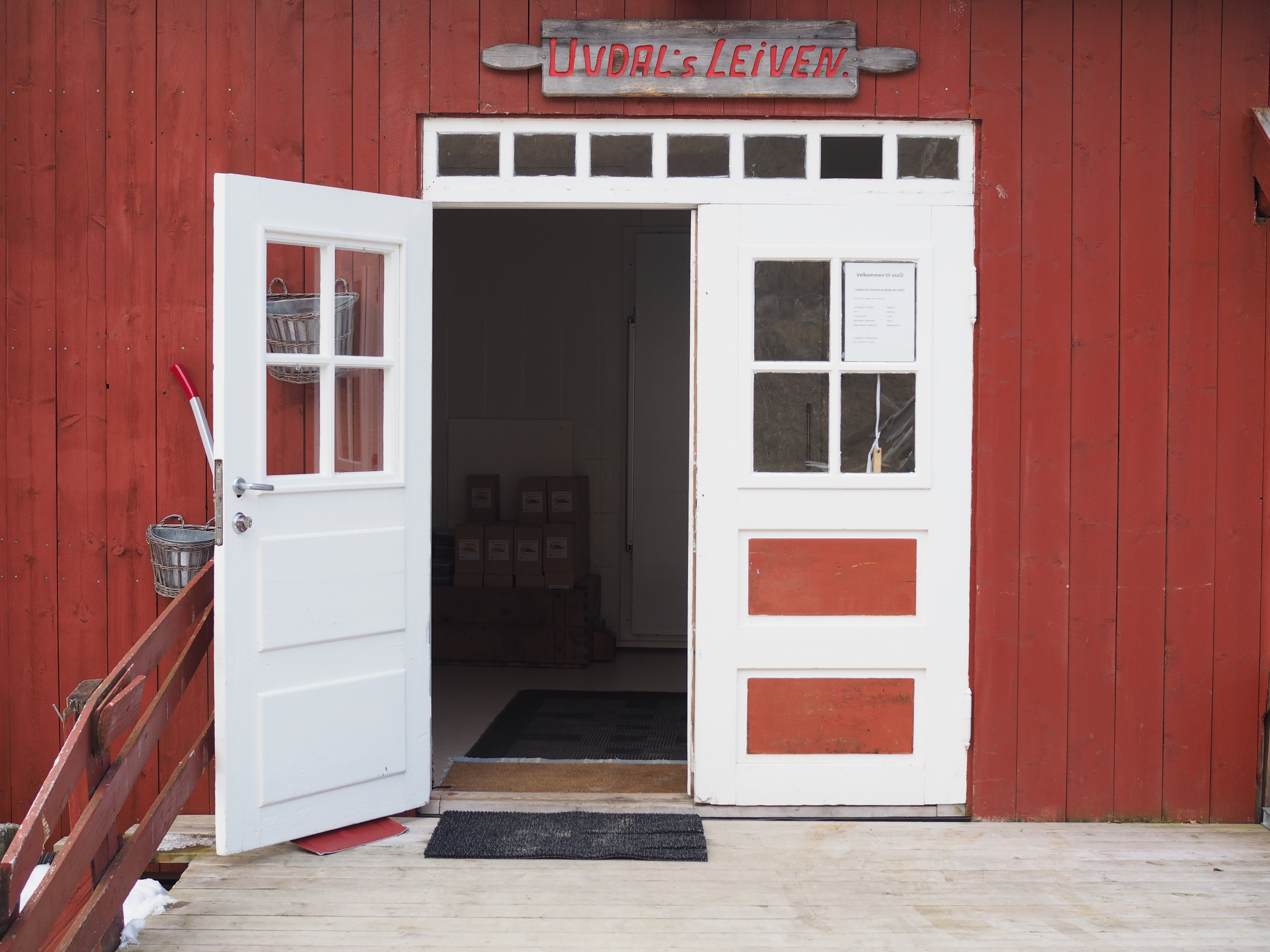 It’s 9.00am when I pass through the open doors of the old barn, overlooking a valley carving its way through the mountainous terrain of Uvdal, Norway. The sun peaks through the grey clouds which have left morning dew on the yellow flowers popping around the well-worn farm. There is a cool breeze, which is welcome in the Uvdalsleiven kitchen, where the takke (griddle) reigns as it exerts its heat in every corner of the room. It’s temperamental. The colder it is inside, the higher its temperature must be. The hotter it is, the lower its temperature. And so it is with the takke, the surroundings effecting it in a way that only an experienced baker can instinctively master. Like a barista, the baker must constantly be in control and make adjusts to produce a quality product. And here at Uvdalsleiven, you can immediately see the symbiotic relationship which creates so much harmony in the kitchen.
It’s 9.00am when I pass through the open doors of the old barn, overlooking a valley carving its way through the mountainous terrain of Uvdal, Norway. The sun peaks through the grey clouds which have left morning dew on the yellow flowers popping around the well-worn farm. There is a cool breeze, which is welcome in the Uvdalsleiven kitchen, where the takke (griddle) reigns as it exerts its heat in every corner of the room. It’s temperamental. The colder it is inside, the higher its temperature must be. The hotter it is, the lower its temperature. And so it is with the takke, the surroundings effecting it in a way that only an experienced baker can instinctively master. Like a barista, the baker must constantly be in control and make adjusts to produce a quality product. And here at Uvdalsleiven, you can immediately see the symbiotic relationship which creates so much harmony in the kitchen.
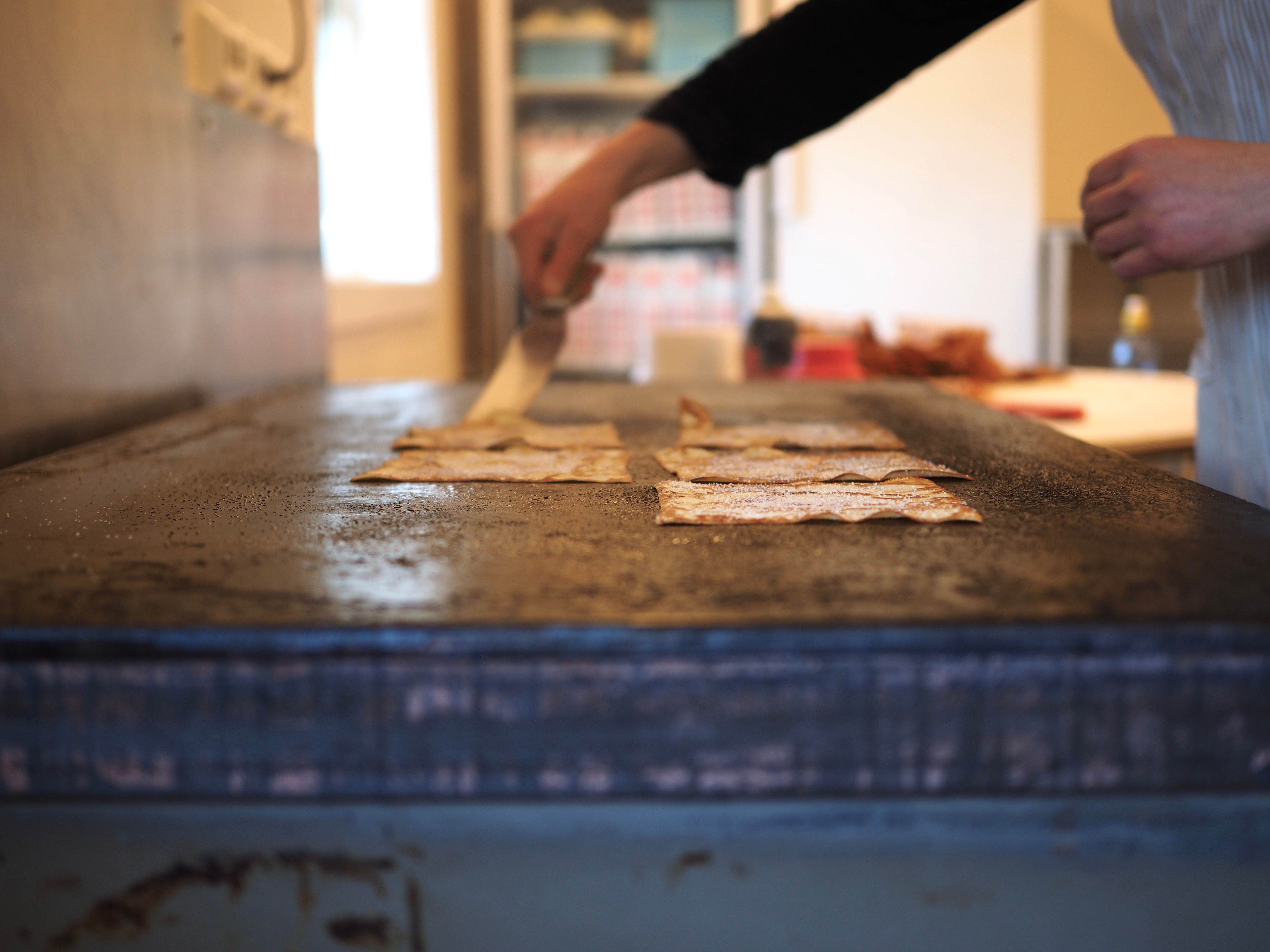
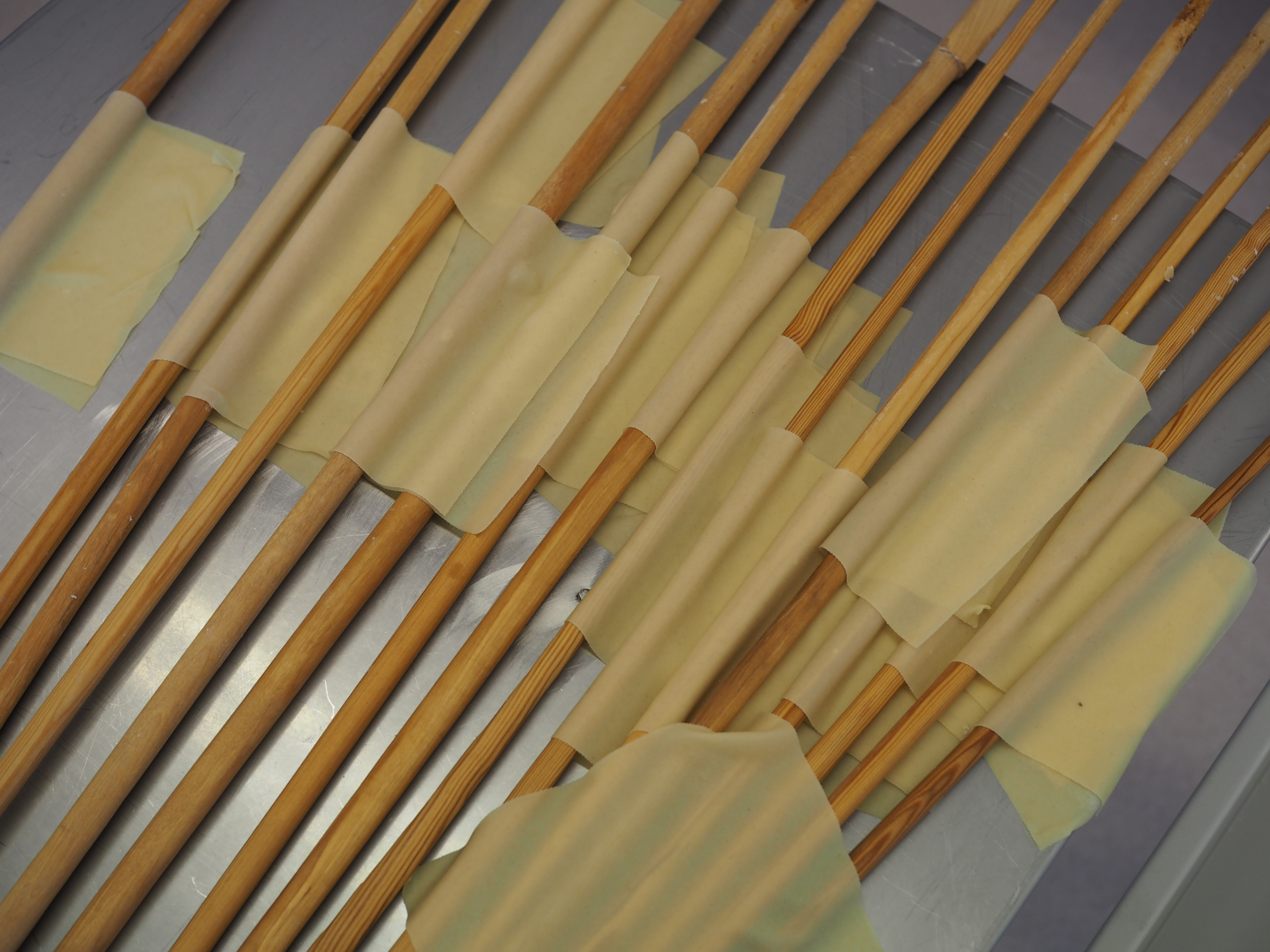 The kitchen is buzzing as the ladies look up and welcome me in. Uvdalsleiven, aptly translated to Uvdal’s dough sheets, is a traditional Norwegian bakery run by the lovely Hanne Tufto. And like so many of the local producers around, her story is a generational one. The players are the women in her family. A grandmother, a mother, an aunt, a daughter. Hanne took over the bakery from her mother and aunt 15 years ago and continues to make the recipes of her grandmother with the help of Hanne Karine and Edyta. This is my first time visiting and we have planned it so that I will be coming again the following week to learn how they make another one of their beloved products. This is the first part of their story, a mere glimpse into their kitchen, their routines, their virtuosity. Today, it’s all about their traditional rømmebrød, or sour cream wafers.
The kitchen is buzzing as the ladies look up and welcome me in. Uvdalsleiven, aptly translated to Uvdal’s dough sheets, is a traditional Norwegian bakery run by the lovely Hanne Tufto. And like so many of the local producers around, her story is a generational one. The players are the women in her family. A grandmother, a mother, an aunt, a daughter. Hanne took over the bakery from her mother and aunt 15 years ago and continues to make the recipes of her grandmother with the help of Hanne Karine and Edyta. This is my first time visiting and we have planned it so that I will be coming again the following week to learn how they make another one of their beloved products. This is the first part of their story, a mere glimpse into their kitchen, their routines, their virtuosity. Today, it’s all about their traditional rømmebrød, or sour cream wafers.
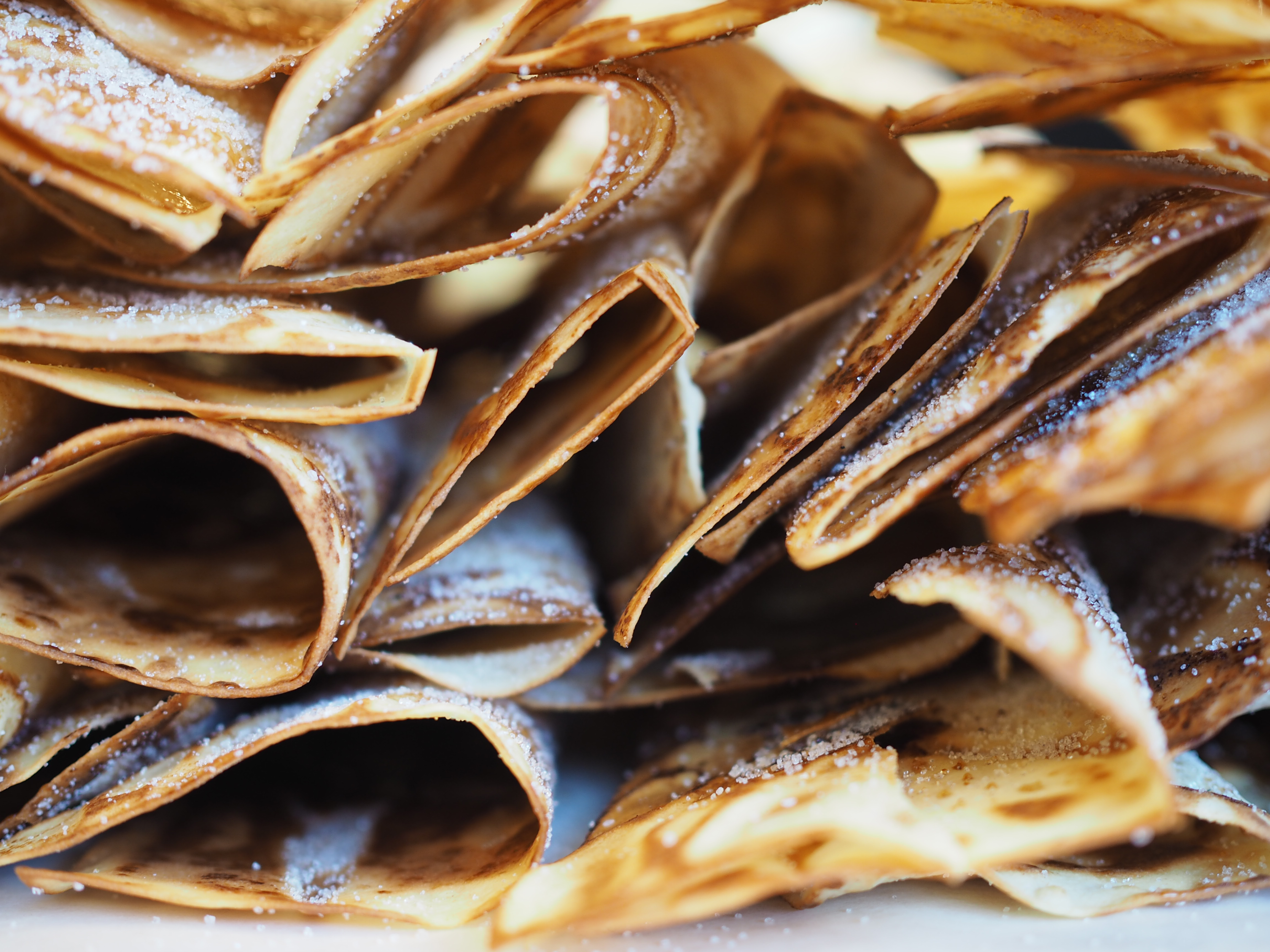
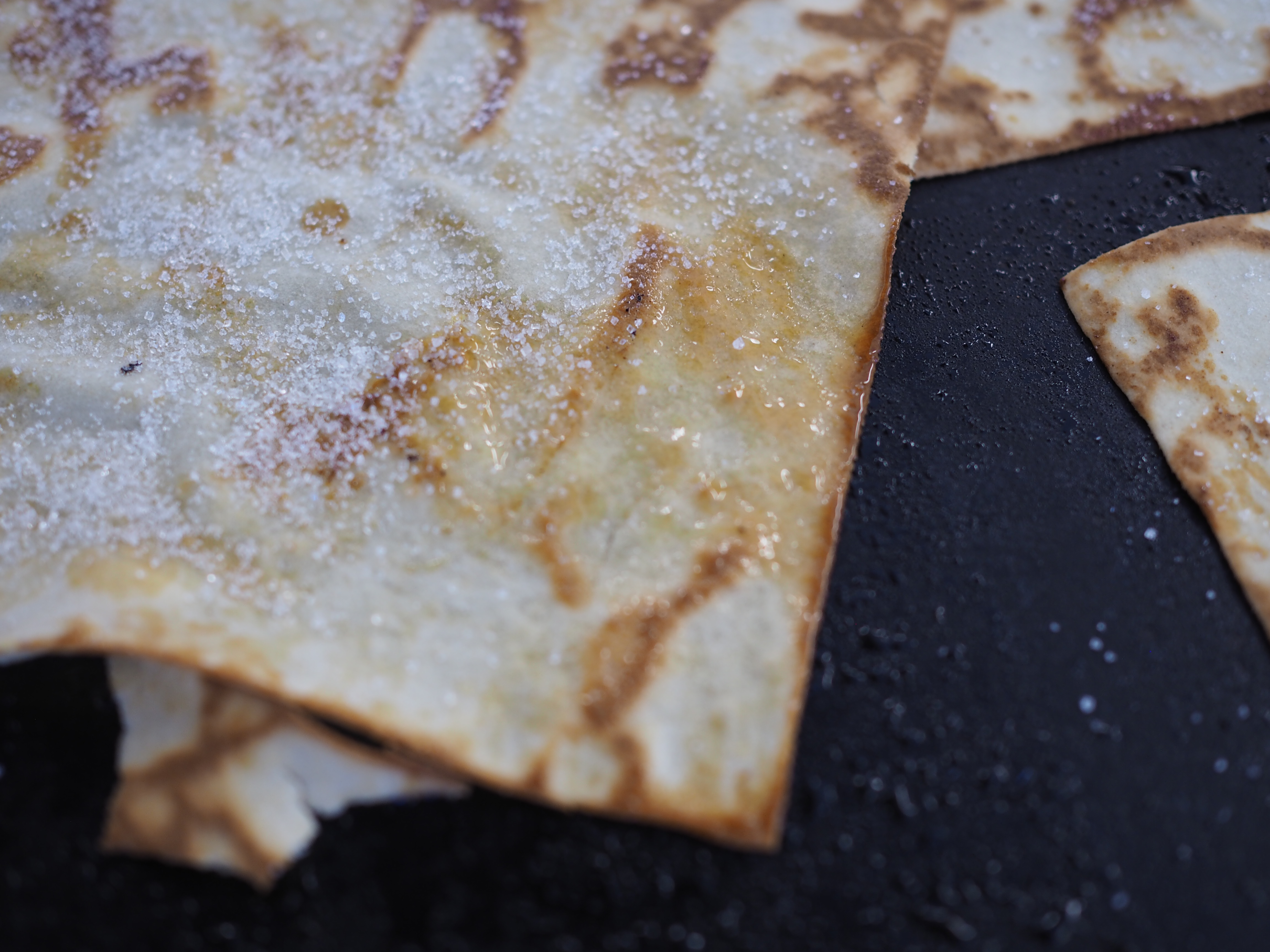
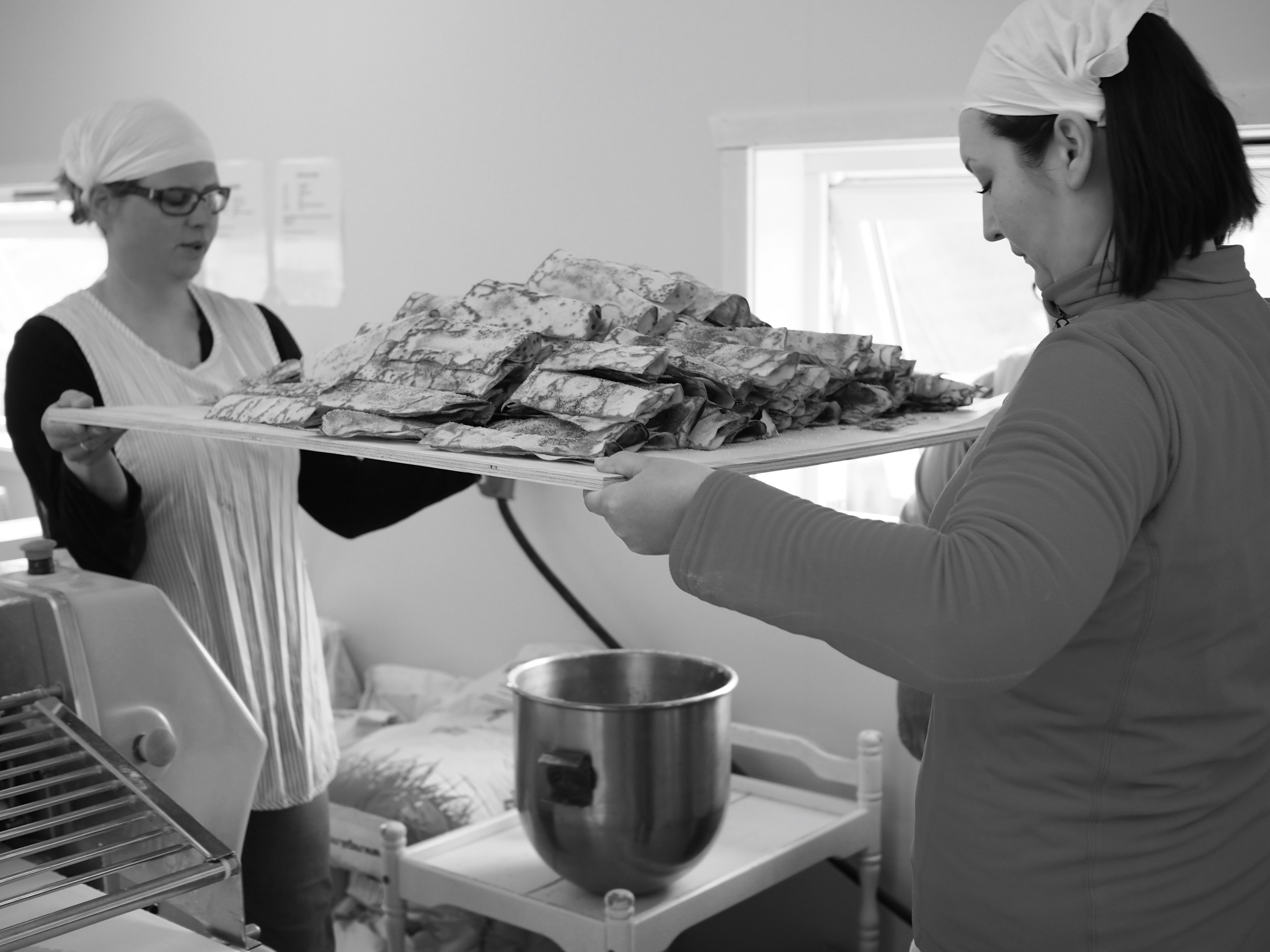 The recipe for rømmebrød was given to her grandmother by her grandmother’s neighbor many years ago, and has stayed in Hanne’s family ever since. It’s a dessert bread which is more linked to the area of Hallingdal in Norway, but is something which Hanne grew up with, something which is part of her story in Uvdal. Usually rømmebrød is shaped in a small round and left flat, but Hanne has swayed from tradition to cut them into squares and fold them over, adding a nice texture and a beautiful aesthetic.
The recipe for rømmebrød was given to her grandmother by her grandmother’s neighbor many years ago, and has stayed in Hanne’s family ever since. It’s a dessert bread which is more linked to the area of Hallingdal in Norway, but is something which Hanne grew up with, something which is part of her story in Uvdal. Usually rømmebrød is shaped in a small round and left flat, but Hanne has swayed from tradition to cut them into squares and fold them over, adding a nice texture and a beautiful aesthetic.
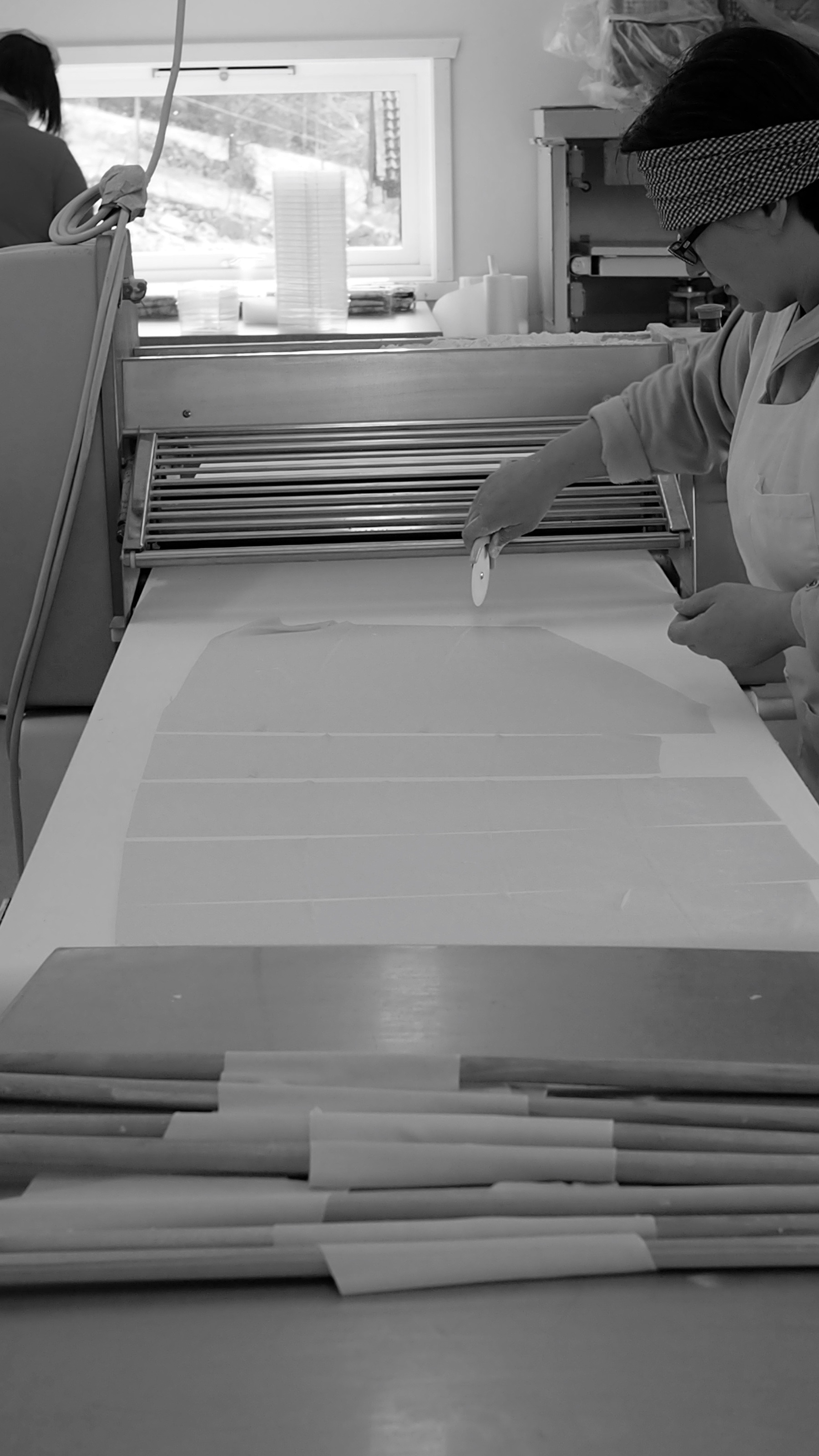
Rømmebrød er farlig – rømmebrød is dangerous – Det er så godt at du ikke klarer å la være å spise en til. Og en til. Og en til … – Mat Fra Numedal Bok
I first tried Uvdalsleiven’s rømmebrød at one of the local cafes and I fell for its sweet and crispy goodness. Its delicate nature only adds to the exquisiteness of it. Hanne’s rømmebrød requires three people in the kitchen. One to prepare the dough and pack, one to roll out the dough and cut into squares and one to cook over the hot takke. Once the dough is placed on the takke, it gets a generous coating of sugar which caramelizes against the heat, creating a pattern of dark and golden brown against a creamy white. The technique is never one to be taken lightly though, as the delicate dough, so thin you could almost see through it, often breaks during cooking. And the finished product, folded over like a pillowy wafer, must be handled with great care. It’s elegant, graceful, and fragile. The journey from dough to plate is one of vigilance, but once there, it can be broken and its fragility becomes a part of the joy in eating it. Crumbs? Most certainly. Loose sugar across the plate? Yes. Smiles all around. Guaranteed. Enjoy it with a hot cup of coffee or tea, with ice cream or for a more polished affair, with a glass of sparkling wine. Perfect on top of desserts, filled with cream, served with fruit or eaten alone with bare hands.
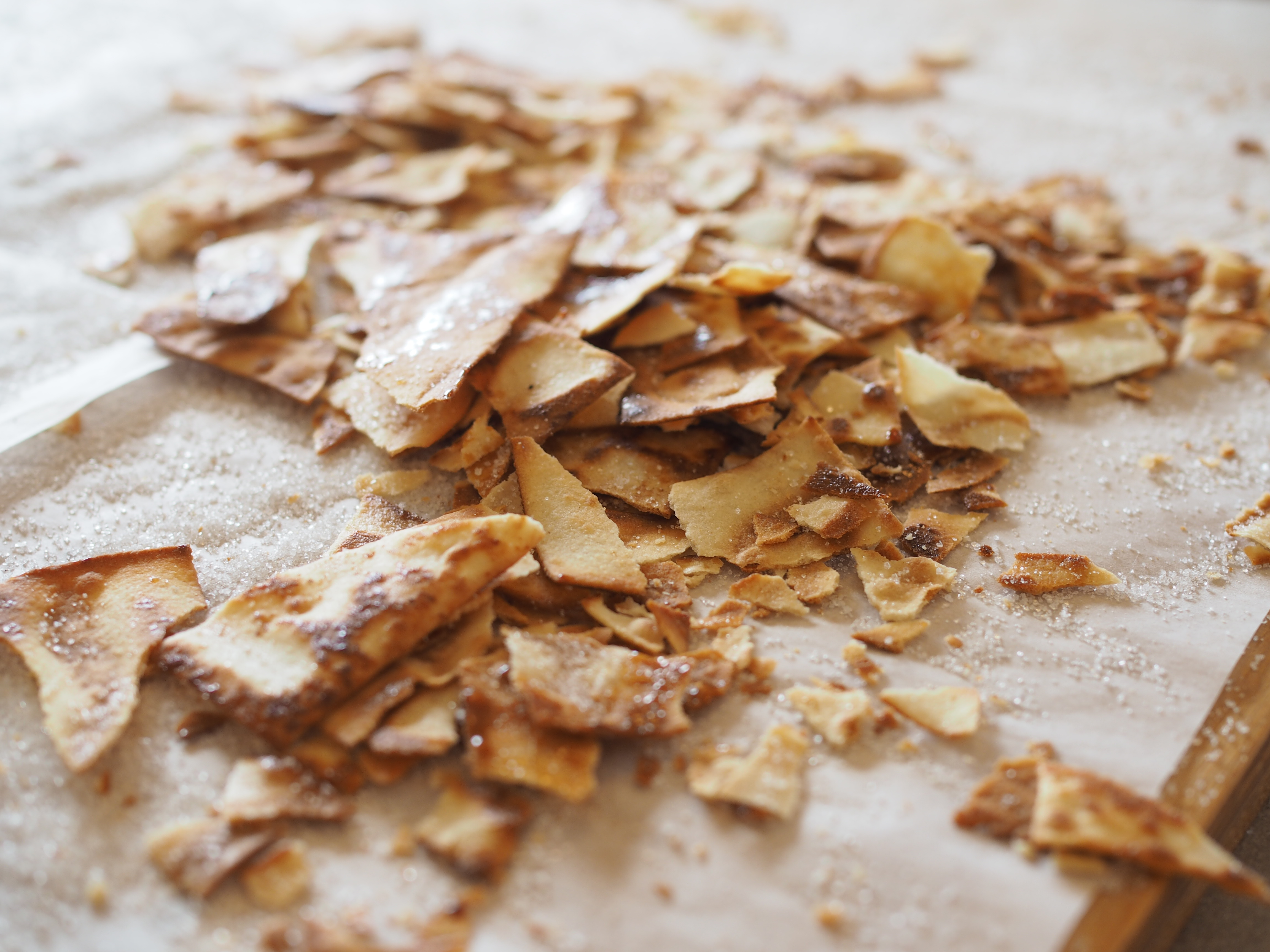
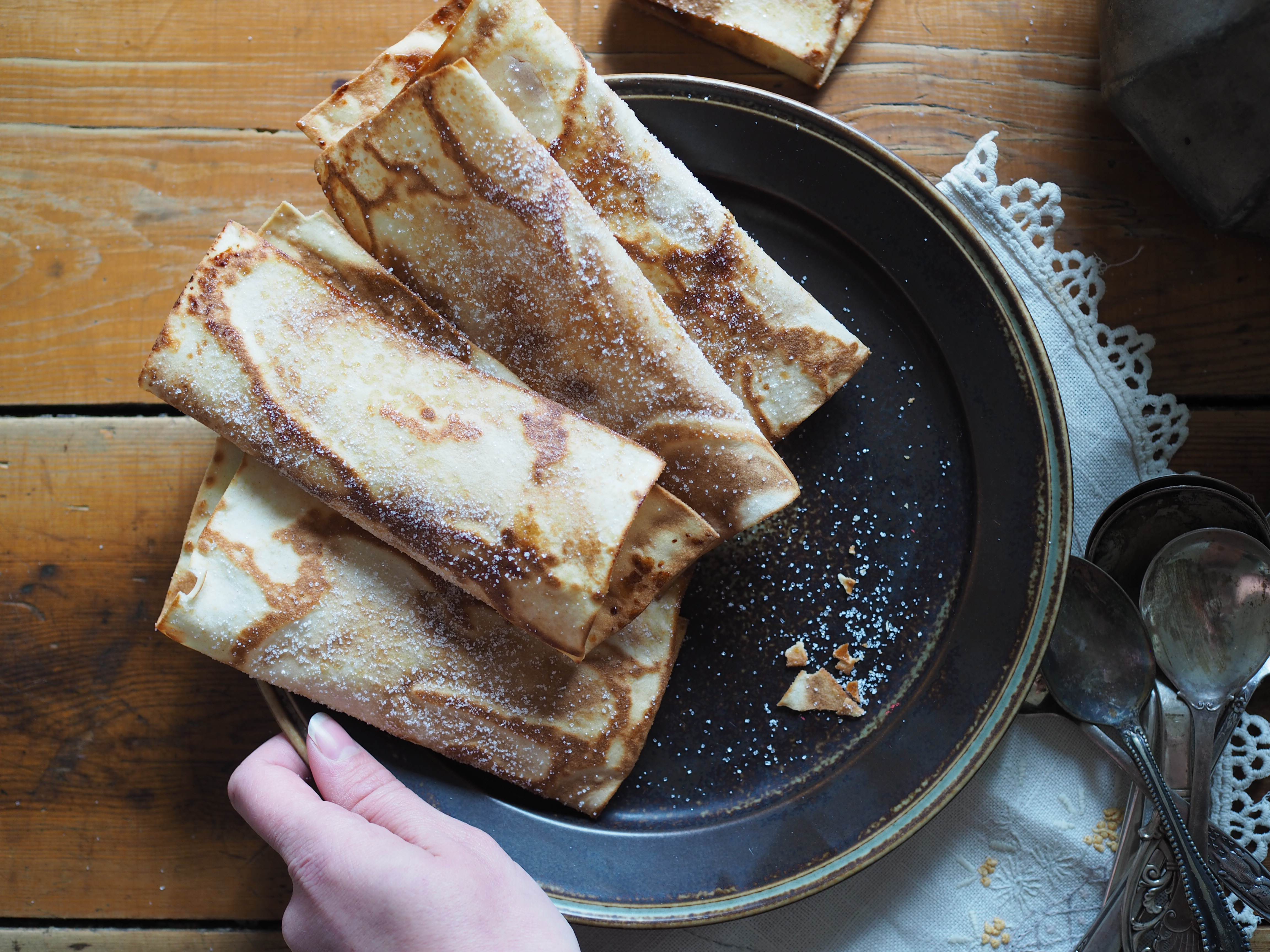
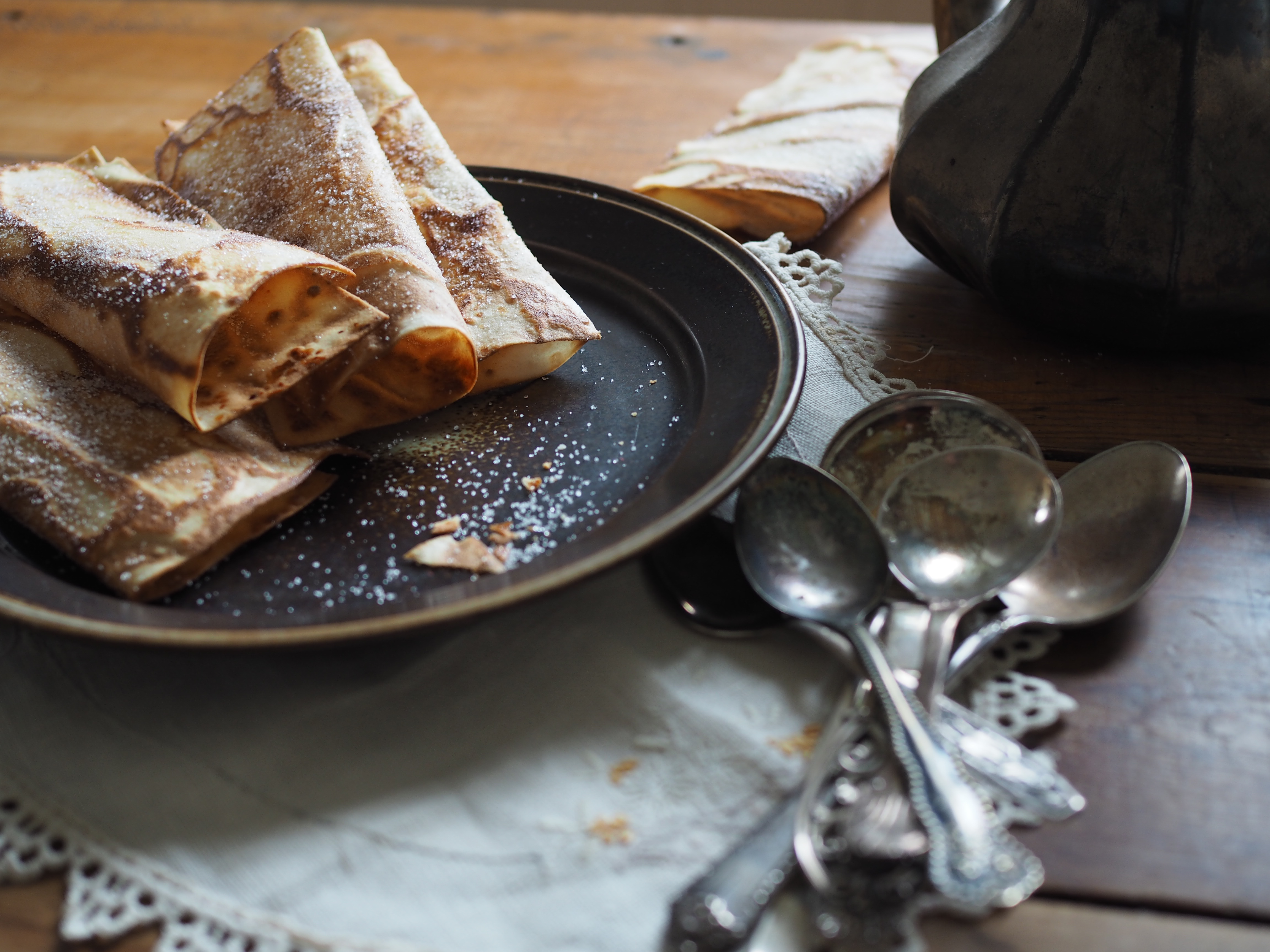
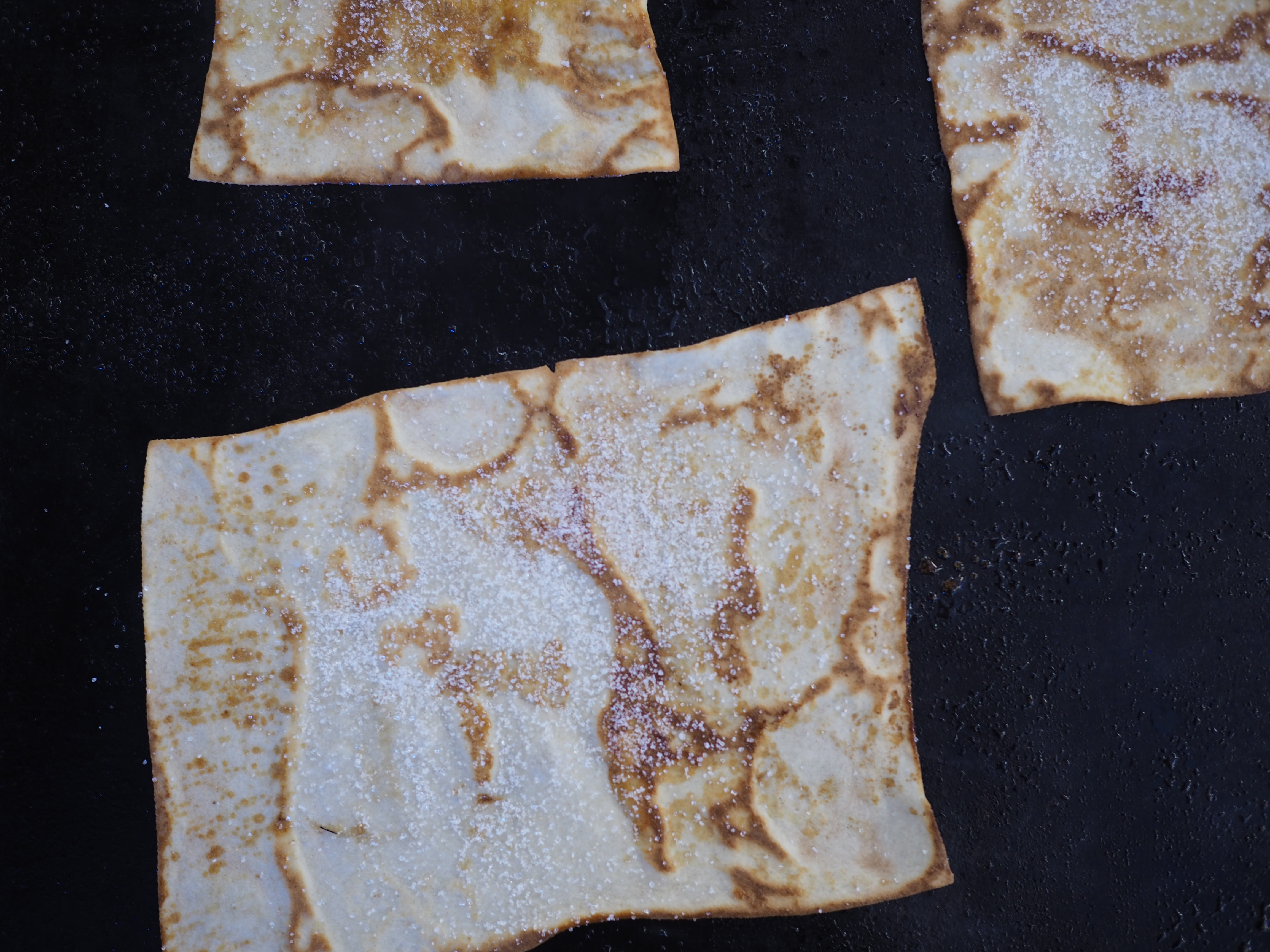 Rømmebrød from Udval is just one of the traditional Norwegian products from Uvdalsleiven Tradisjonsbakst, and Hanne is happy to share with you the recipe so you can enjoy it at home. Her products are available throughout Numedal or directly from the bakery. If the red barn door is open, by all means, stop on in and stock up.
Rømmebrød from Udval is just one of the traditional Norwegian products from Uvdalsleiven Tradisjonsbakst, and Hanne is happy to share with you the recipe so you can enjoy it at home. Her products are available throughout Numedal or directly from the bakery. If the red barn door is open, by all means, stop on in and stock up.
The story of Uvdalsleiven continues and I’ll be sharing Hanne’s renowned Kling fra Uvdal in the upcoming post, so be sure to follow along.
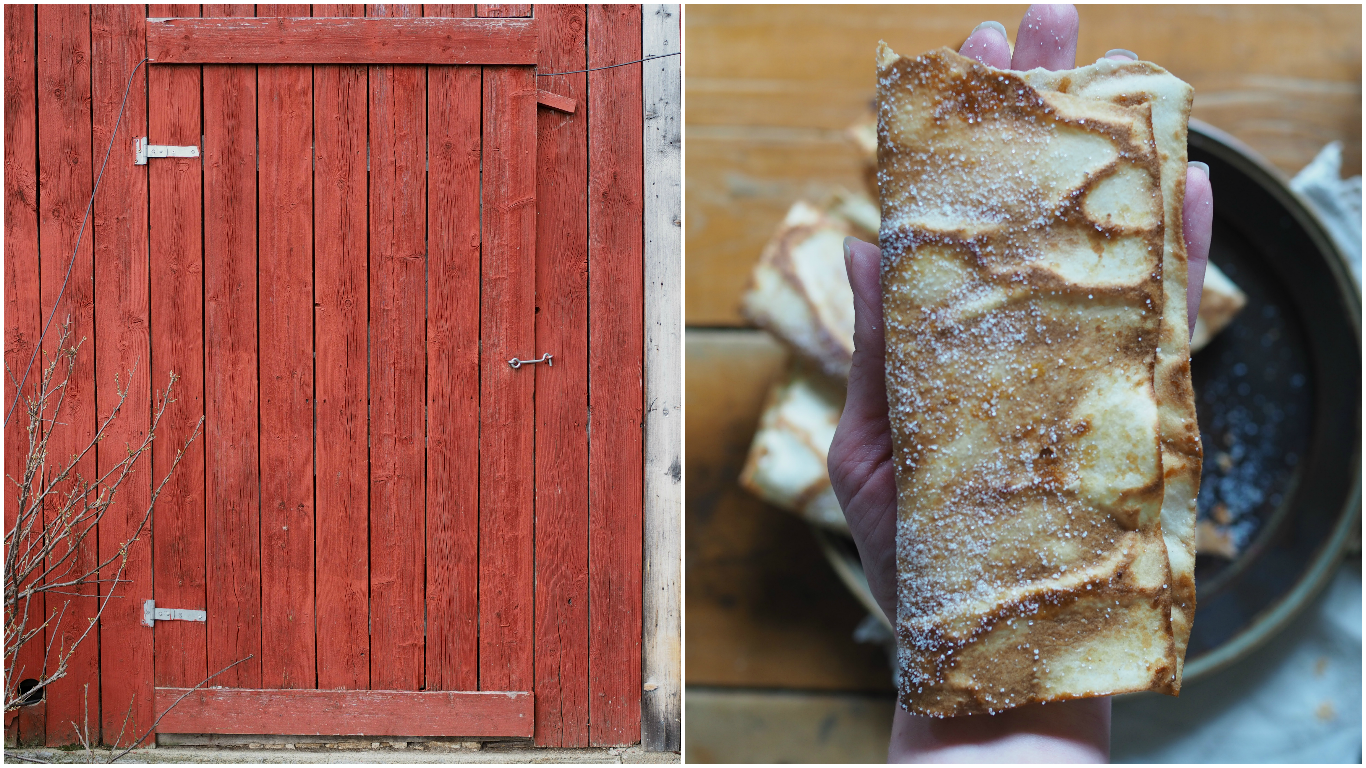
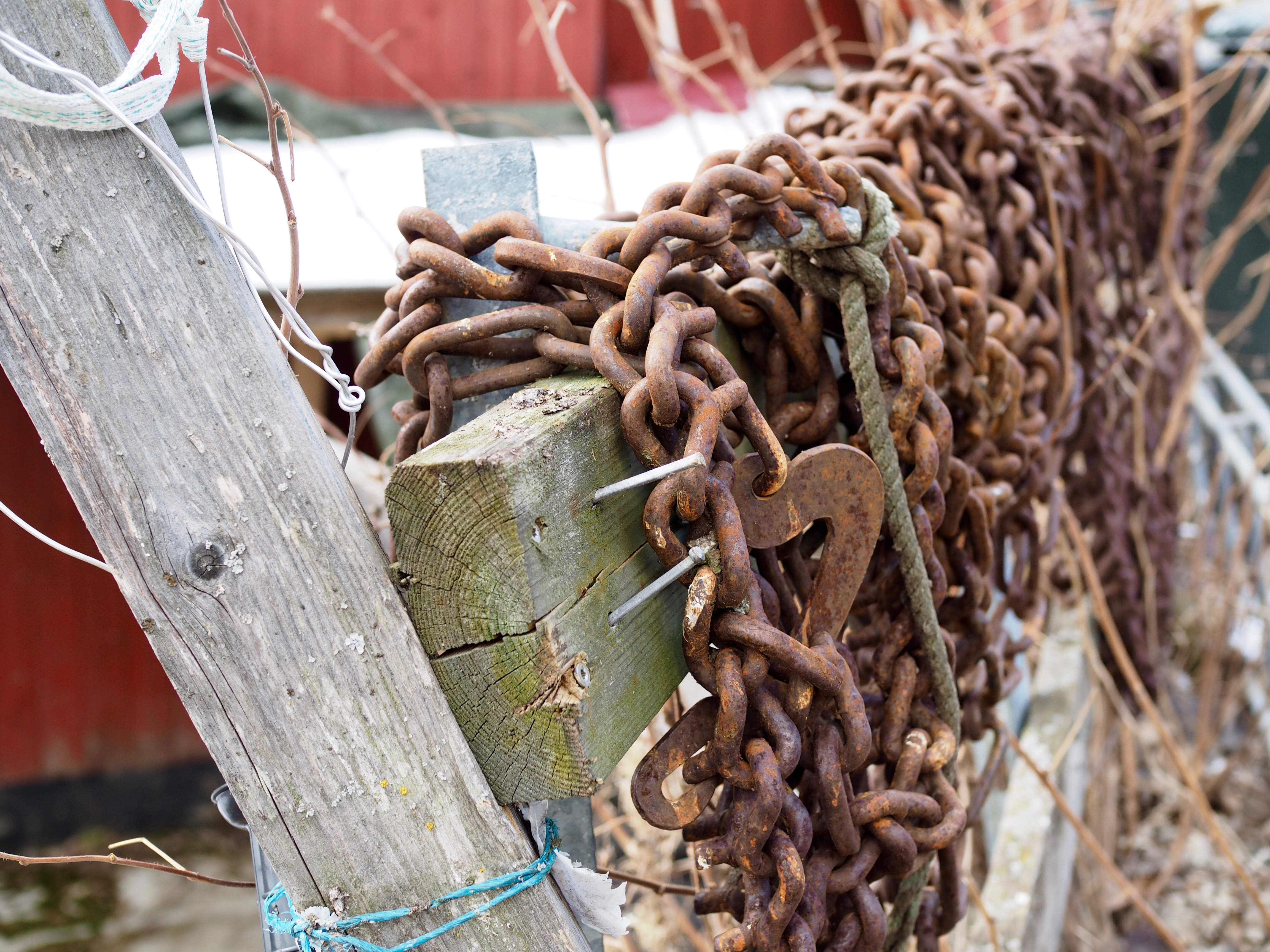
Rømmebrød
(Makes over 100, so feel free to half the recipe)
Ingredients:
- 500 g (2 1/4 cups) butter (setersmør)
- 250 g (3/4 cup) dark syrup
- 450 g (2 cups) full-fat sour cream
- 1.35 k to 1.5 kg (3 to 3.3 pounds) flour
- Sugar, for sprinkling
Place all the ingredients in a stand mixer fitted with the paddle attachment. Beat well until the dough is worked through, a couple of minutes. Tear off small pieces of dough and place on a floured surface. Using a rolling pin, roll out the dough into a thin rectangle, adding more flour as needed. When you think the dough is as thin as possible, roll it a little more. The thicker the dough, the more bubbles will appear during the cooking process and it can become slightly more soft, rather than crispy. Cut the dough into roughly 6 x 6-inch ( 15 x 15 cm) squares or similarly sized rectangles.
Heat a takke (griddle) to medium-high heat or place a large frying pan directly on the stove over medium-high heat – be careful not to have the heat too high or the sugar many burn rather than carmelize.
Butter the takke and add a couple pieces of dough. Sprinkle the dough with sugar and cook for about 30 seconds or until light brown. Flip the sqaures over, add more sugar after a few seconds, and cook for 30 seconds more or until light brown and the sugar has carmelized. Transfer to a wire rack to cool and fold in half as Hanne does. Carefully wipe of off any excess sugar from the takke with a paper towel, add more butter, and continue to cook the rest of the dough in this manner.
Serve immediately or store in an airtight container for up to 3 months.
*The takke or griddle will accumulate a bit of carmelized sugar, so ensure you clean it well afterwards! And have a window open nearby.
Hanne’s recipe can also be found in the Mat Fra Numedal cookbook.
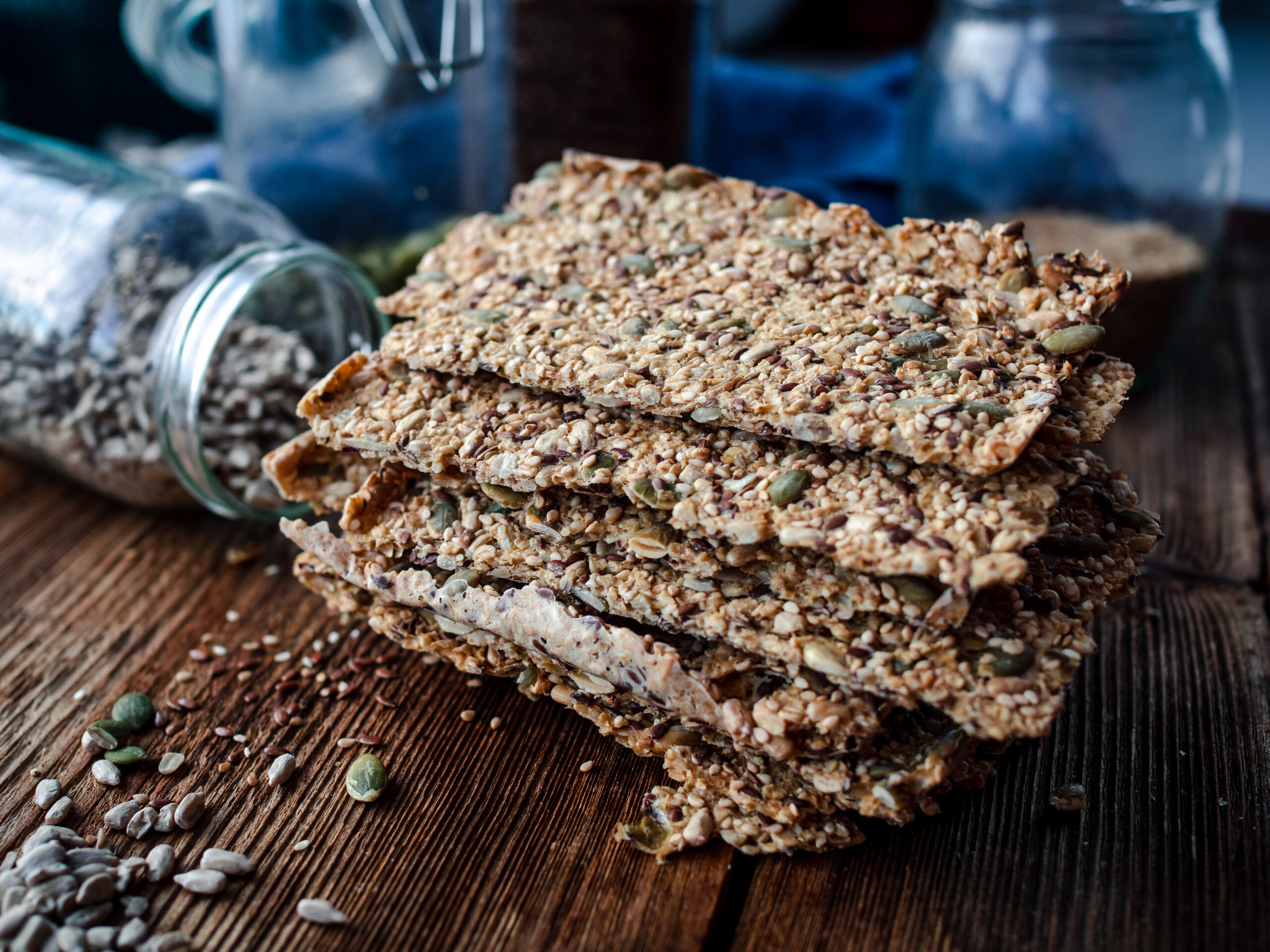
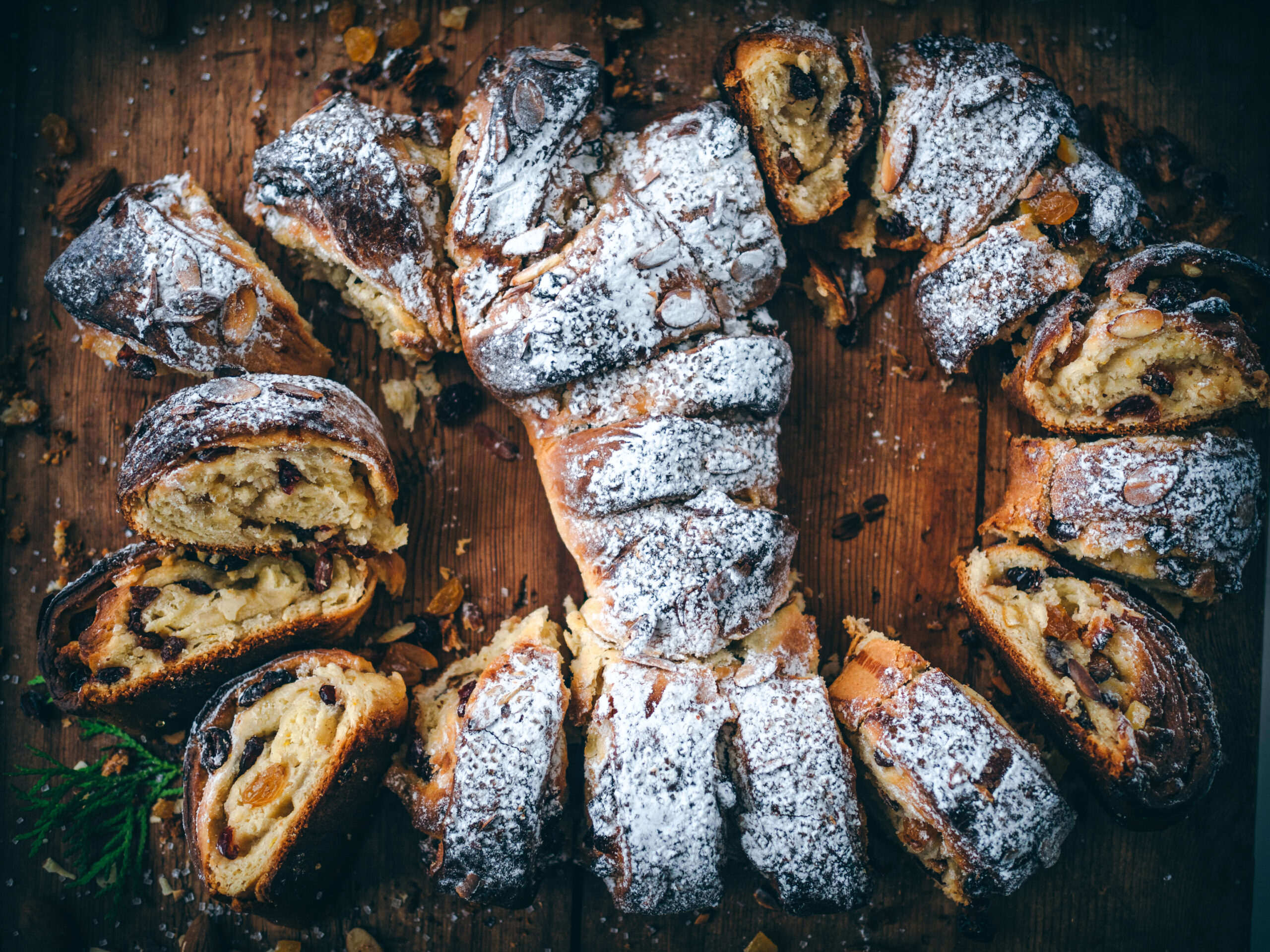
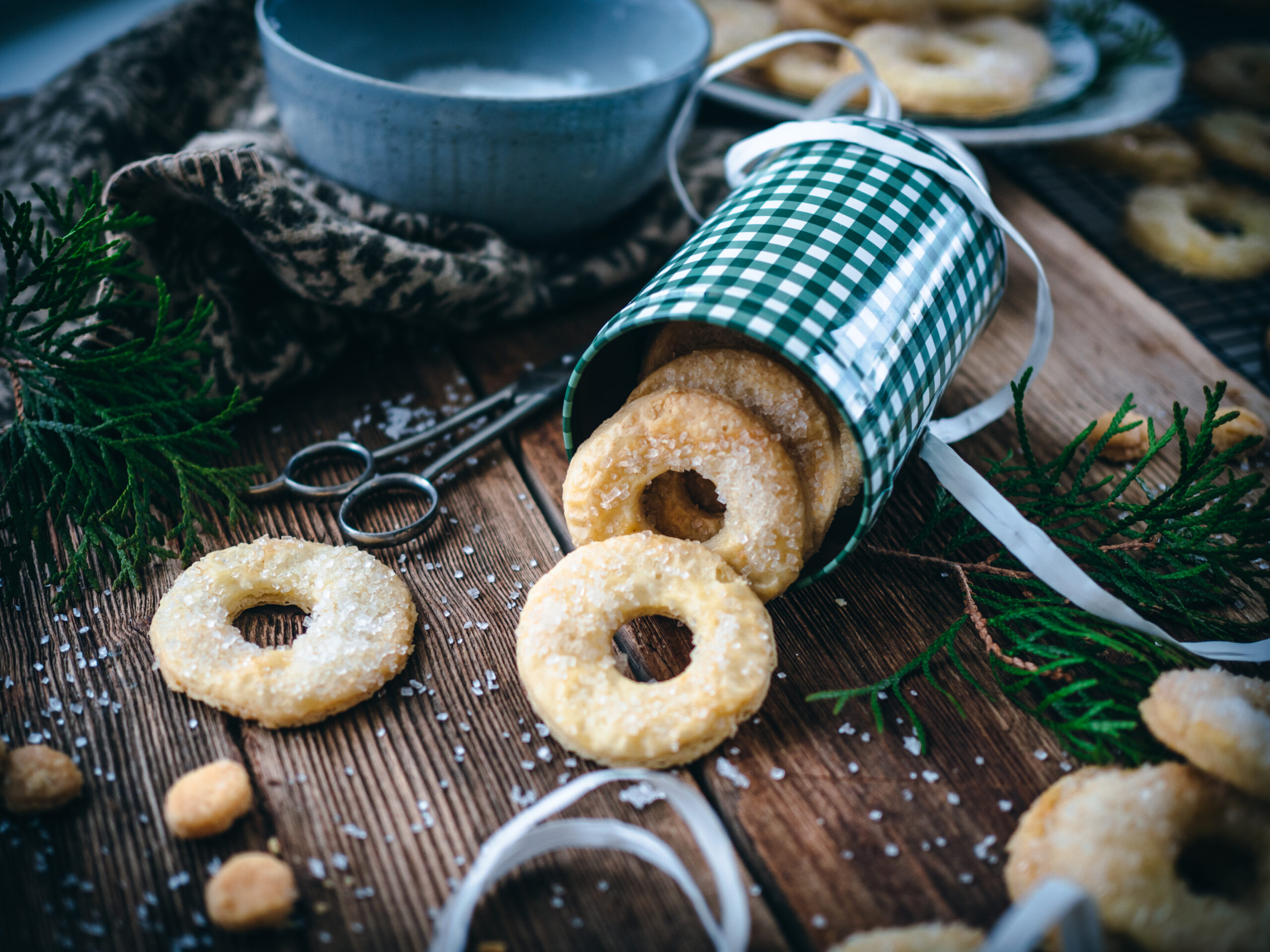
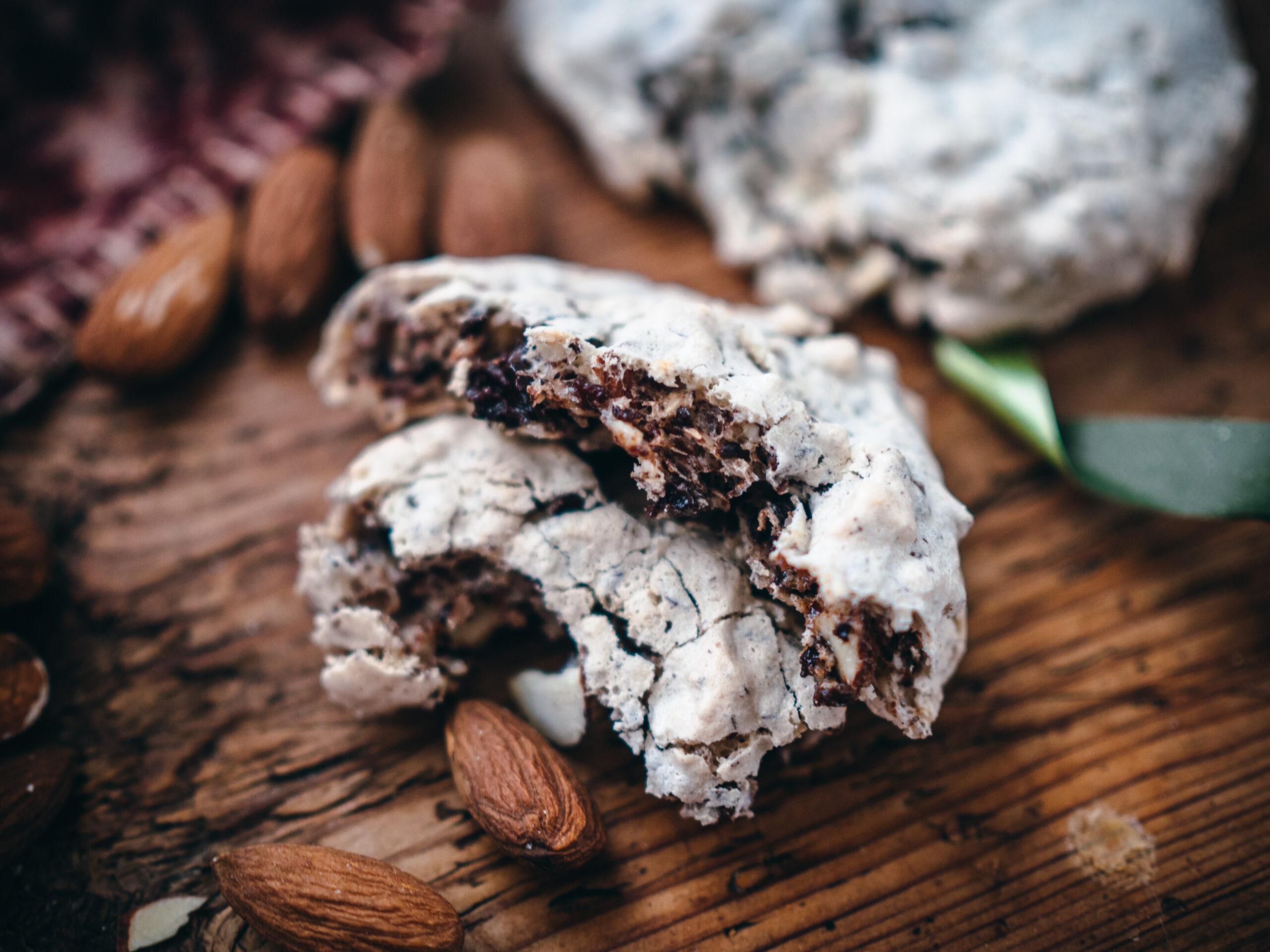
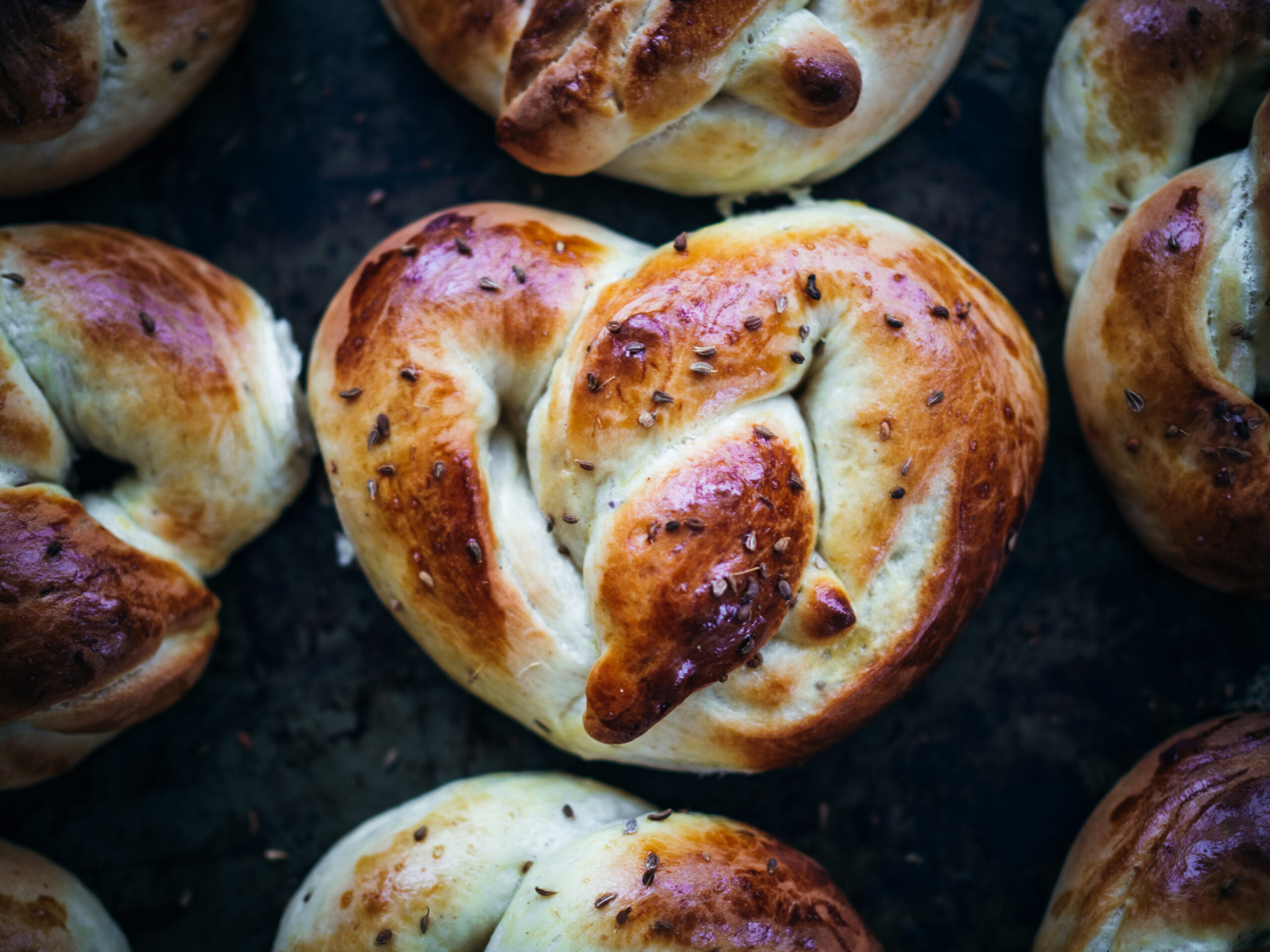
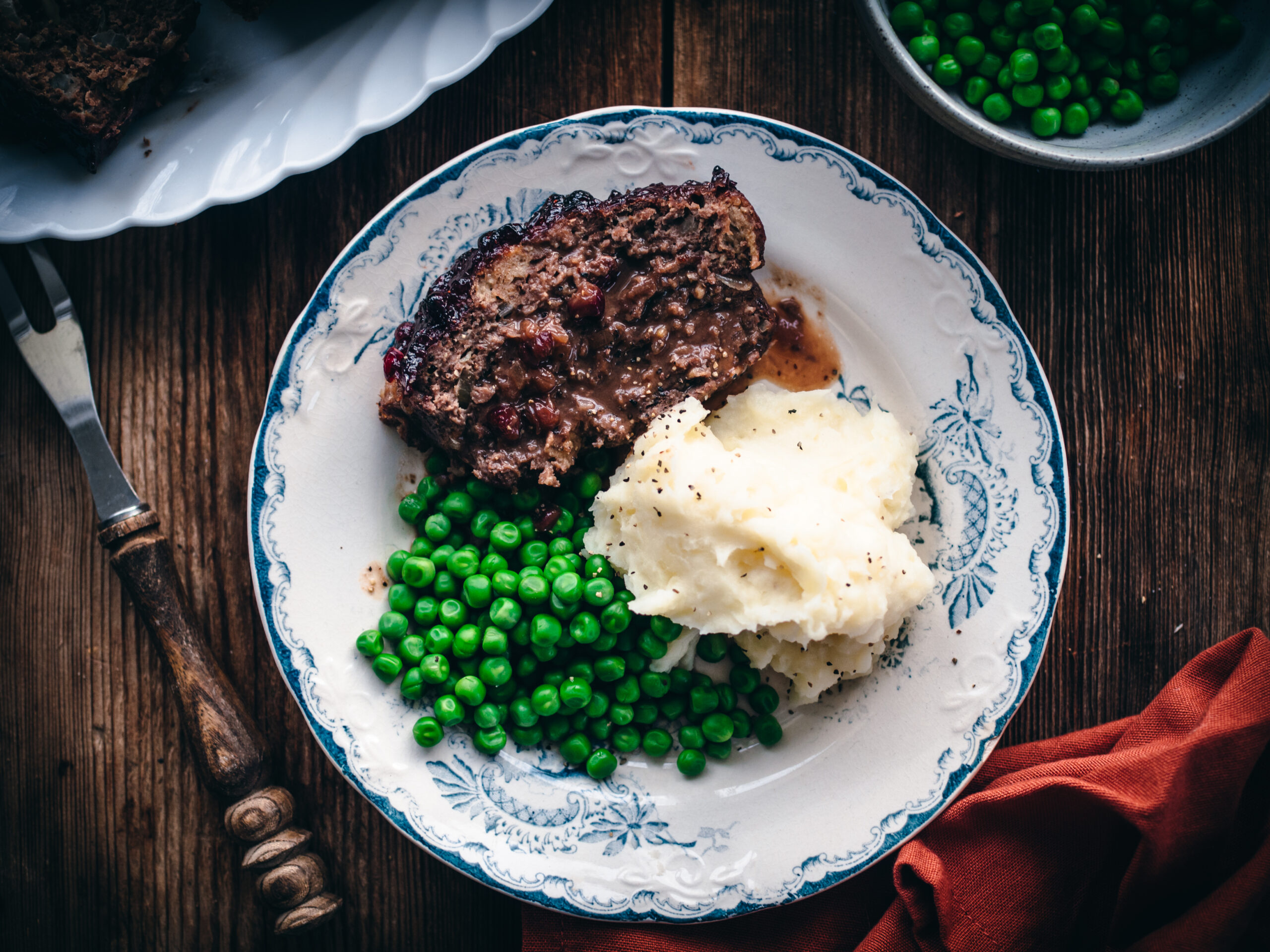
Tusan takk for the recipe on Rømmebrød. I would like you to find someone who still makes krina lefse. It is my favorite from my childhood and now those in my family who made it are gone.
Hi Ron, thanks for bringing my attention to krinalefse. I actually have never tried it, but it looks delightful! I believe Helgeland is most known for it – do you have family roots from this area? I will certainly ask around and put it on my list of recipes to find and put on the blog. Thanks again!
Ron, check out the lefseking blog for a krine lefse recipe:
https://lefseking.com/2018/01/26/my-story-of-krina-lefse-and-flatbrod/
It’s a 3 part blog. The third part has a video showing how to decorate the krine lefse using a tool his dad made for his mom. It’s really cool.
[…] See the first part of my visit to Uvdalsleiven and how make their traditional rømmebrød here. […]
What is krinalefse, and how does it differ from say, potato lefse ? I have always made it with potatoes, because my grandmother did it that way.
I don’t know much about krinalefse, other than it is mainly produced in Helgeland and is also referred to as Nordlandslefse. It doesn’t appear to traditionally have potatoes in it. It’s just another version of lefse and from what I can find, usually has syrup and horn salt as part of the ingredients.
I read the comments about krina lefse. I found an interesting 3-part post on krina lefse:
https://lefseking.com/2018/01/26/my-story-of-krina-lefse-and-flatbrod/
I don’t know the fellow who posted it. He shows a krina tool his dad made for his mom. He even has a video on how to apply the topping.
Thanks for your blog. I enjoy reading about different variations of family recipes of my family and to see how different parts of Norway interpret them.
I finally found a recipe for krinalefse in a cookbook at Barnes and Noble—Nordic Baking. My ex spoke many years ago how his grandmother made the regular potato lease and krinalefse. He said he really liked the krinalefse. I tried to find out what exactly what this was but only recently was able to find anything. Krinalefse is made from a different, sweeter dough than regular lefse. It has a sweet glaze on it with patterns etched in it and then baked or broiled. It sounds labor intensive to me but I would love to try it. I have his Grandmother’s brown bread recipe—-it is delicious toasted.